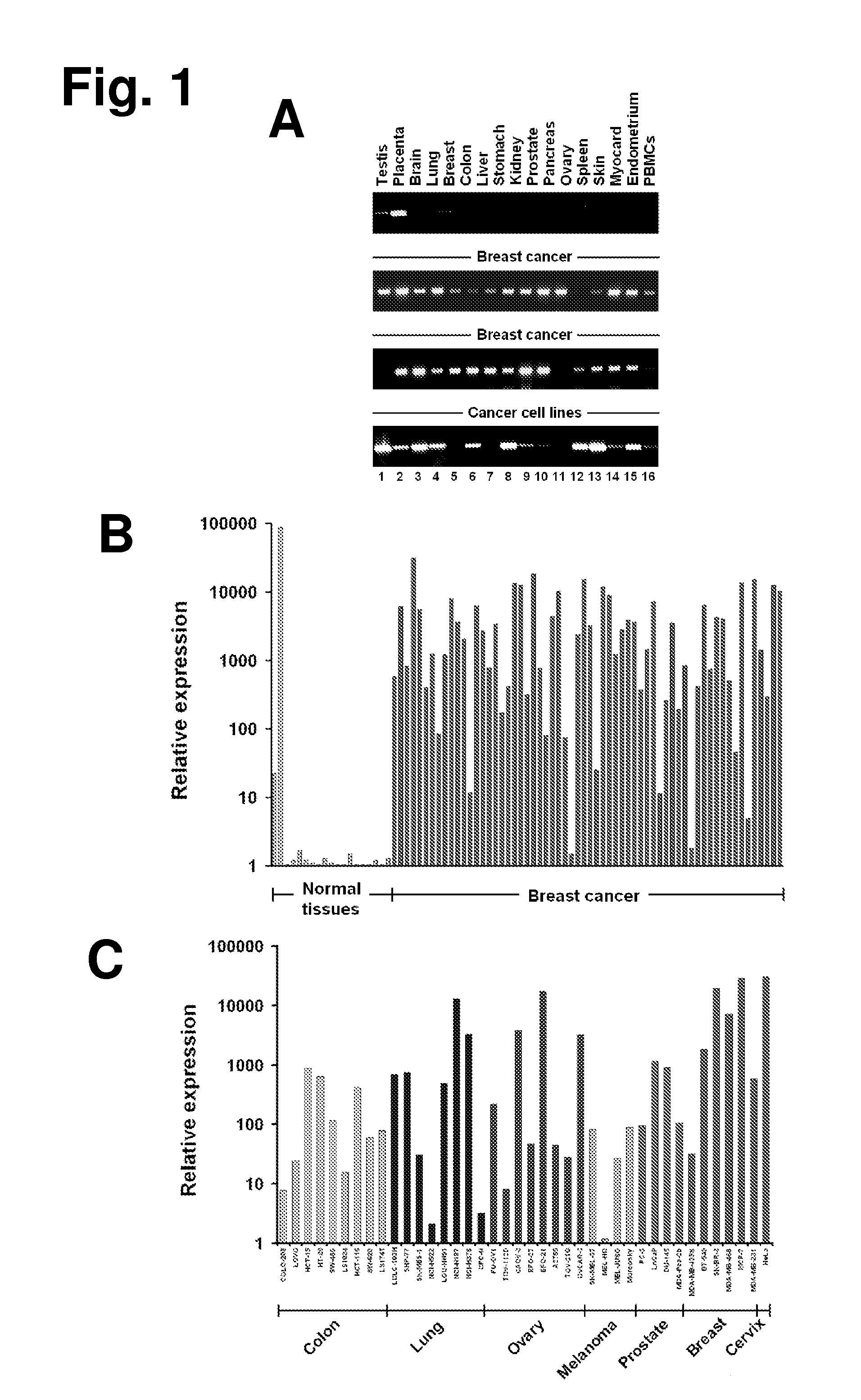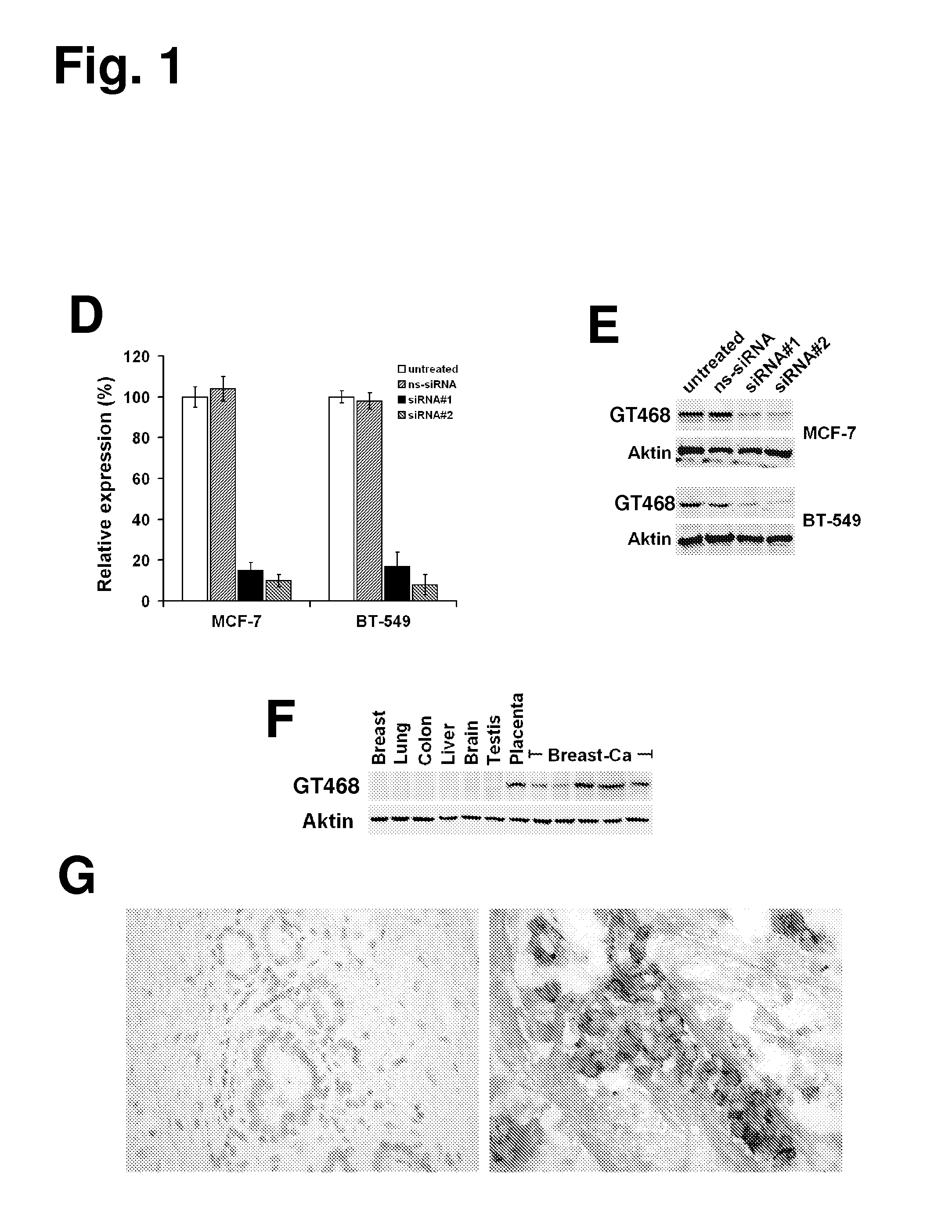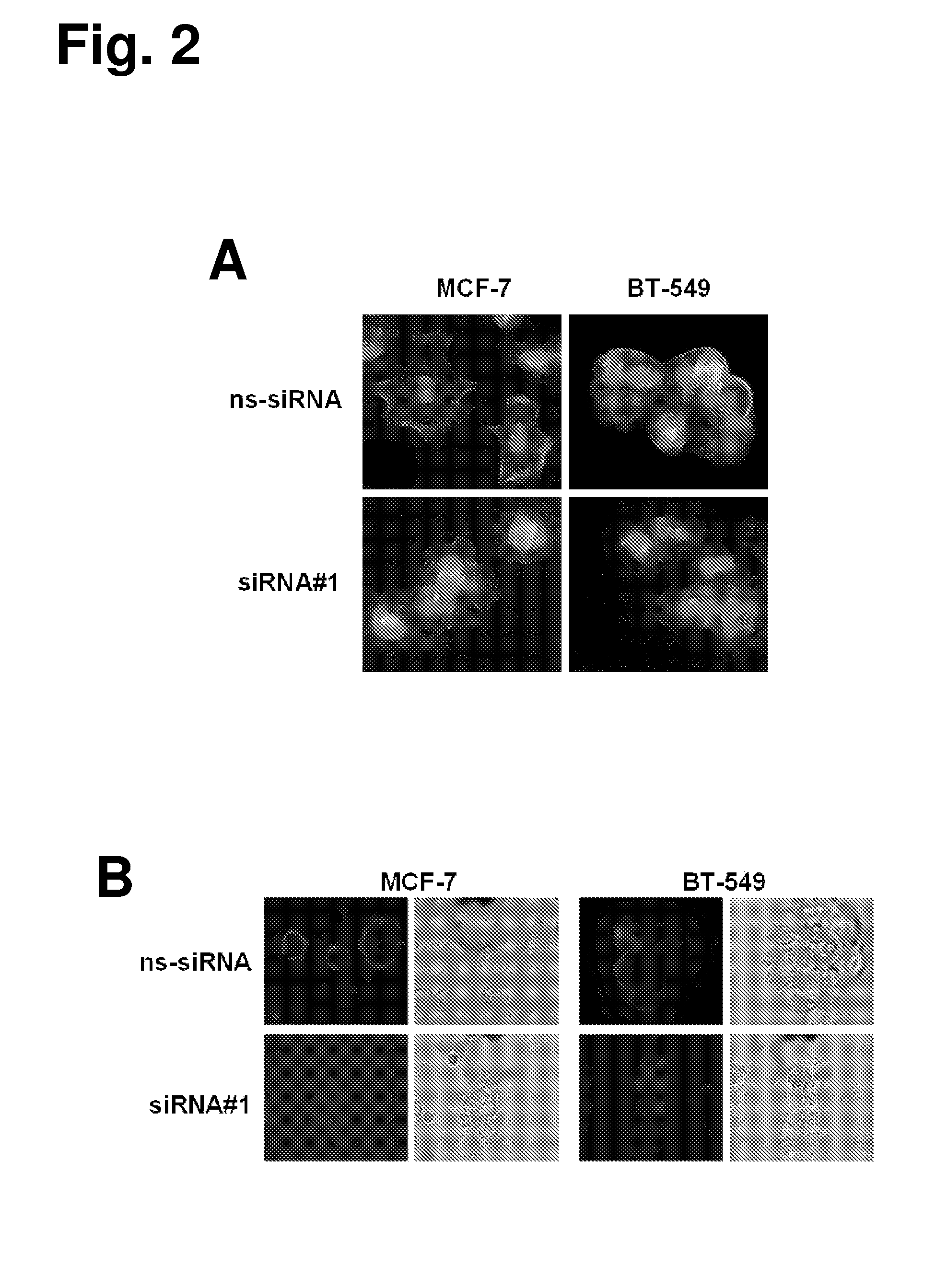Monoclonal antibodies for treatment of cancer
a cancer and monoclonal antibody technology, applied in the field of cancer monoclonal antibodies, can solve the problems of limiting the therapeutic efficacy of herceptin, reducing the immunological potency of herceptin, and unable to be given at the maximum effective dose, so as to minimize the adverse effects
- Summary
- Abstract
- Description
- Claims
- Application Information
AI Technical Summary
Benefits of technology
Problems solved by technology
Method used
Image
Examples
example 1
Materials and Methods
[0373]The techniques and methods mentioned herein are carried out in a manner known per se and as described, for example, in Sambrook et al., Molecular Cloning: A Laboratory Manual, 2nd Edition (1989) Cold Spring Harbor Laboratory Press, Cold Spring Harbor, N.Y., or as described below. All methods including the use of kits and reagents are carried out according to the manufacturers' information.
Tissues and Cell Lines
[0374]Recombinant DNA work was done with the official permission and according to the rules of the state government of Rheinland-Pfalz. Tissues were obtained as human surplus materials during routine diagnostic or therapeutic procedures and were stored at −80° C. until use. Breast cancer cell lines MCF-7 and BT549 were cultured in DMEM / 10% FCS.
RNA-Isolation, RT-PCR and Real-Time RT-PCR
[0375]RNA extraction, first-strand cDNA synthesis, RT-PCR and real-time RT-PCR were performed as previously described (Koslowski, M., Sahin, U., Huber, C. & Tureci, O. ...
example 2
GT468 is Aberrantly Activated and Highly Expressed In Various Tumors
[0406]To identify placenta-specific trophoblastic genes, a genome-wide data mining strategy was adapted, which we had originally developed for in silico identification of germ cell-specific molecules (Koslowski, M., Bell, C., Seitz, G., Lehr, H. A., Roemer, K., Muntefering, H., Huber, C., Sahin, U. & Tureci, O. (2004) Cancer Res. 64, 5988-5993; Koslowski, M., Tureci, O., Bell, C., Krause, P., Lehr, H. A., Brunner, J., Seitz, G., Nestle, F. O., Huber, C. & Sahin, U. (2002) Cancer Res. 62, 6750-6755; Koslowski, M., Sahin, U., Huber, C. & Tureci, O. (2006) Hum. Mol. Genet. 15, 2392-2399). In principle, hierarchical keyword search of GenBank was combined with digital cDNA-library subtraction for prediction of authentically placenta-specific genes. GT468 was identified by this approach.
[0407]GT468 mRNA was investigated in a comprehensive set of normal and neoplastic tissue specimens by end-point RT-PCR and quantitative r...
example 3
GT468 is Located on the Surface of Cancer Cells and is Accessible for Antibodies
[0411]A polyclonal rabbit antibody (rabbit anti-GT468 / C-term) against a GT468-specific peptide epitope (aa 117-127 of SEQ ID NO: 2) was raised. Specificity of the antibody was verified by gene silencing of GT468 using small interfering RNA (siRNA). To exclude siRNA off target activity experiments were conducted with two sets of GT468 specific siRNA duplexes, a scrambled non-silencing oligonucleotide and non-transfected cells. By transfecting breast cancer cell lines MCF-7 and BT-549 with these siRNA duplexes a stable and reproducible reduction of constitutive GT468 mRNA expression by 80-90% compared to controls was achieved (FIG. 1D). Consistent with this observation, the 26 kDa band, detected in accordance with the predicted size of GT468 in Western blot, nearly completely disappeared in both cell lines (FIG. 1E), proving both robust knockdown of GT468 protein expression and specificity of the antibody....
PUM
| Property | Measurement | Unit |
|---|---|---|
| Composition | aaaaa | aaaaa |
| Therapeutic | aaaaa | aaaaa |
| Cytotoxicity | aaaaa | aaaaa |
Abstract
Description
Claims
Application Information
 Login to View More
Login to View More - R&D
- Intellectual Property
- Life Sciences
- Materials
- Tech Scout
- Unparalleled Data Quality
- Higher Quality Content
- 60% Fewer Hallucinations
Browse by: Latest US Patents, China's latest patents, Technical Efficacy Thesaurus, Application Domain, Technology Topic, Popular Technical Reports.
© 2025 PatSnap. All rights reserved.Legal|Privacy policy|Modern Slavery Act Transparency Statement|Sitemap|About US| Contact US: help@patsnap.com



